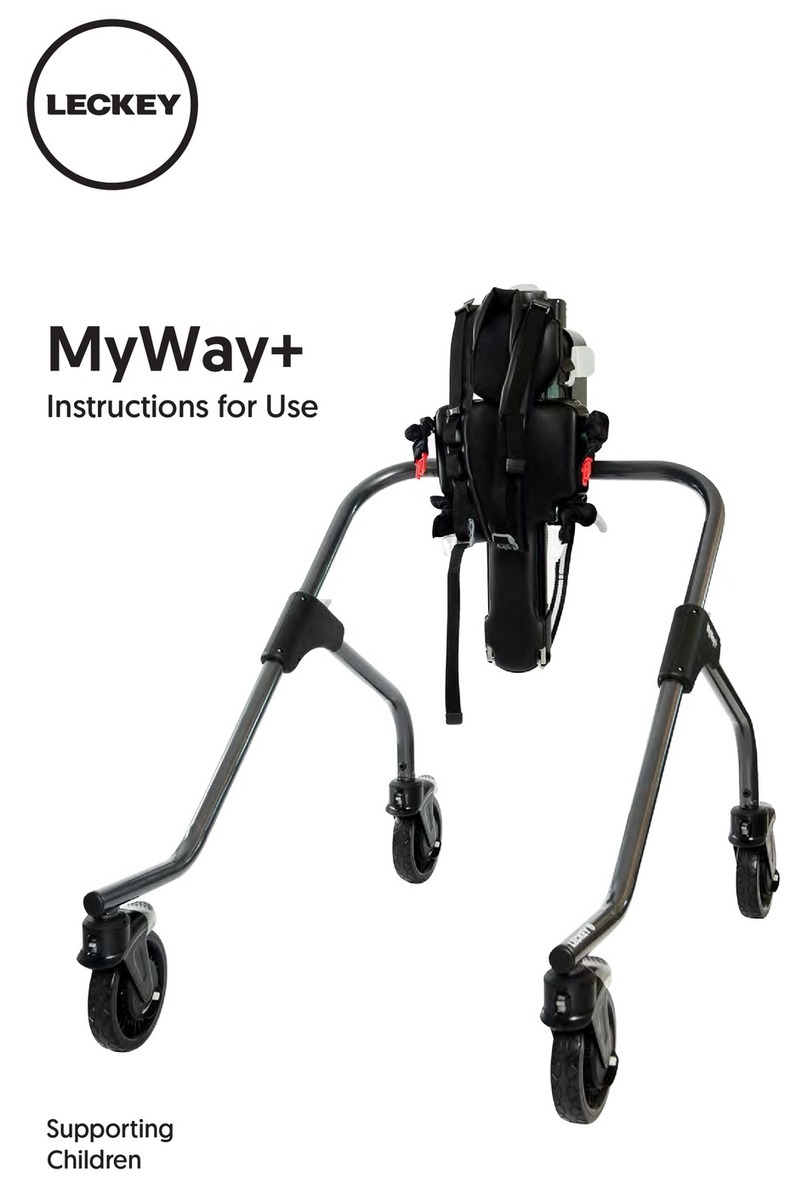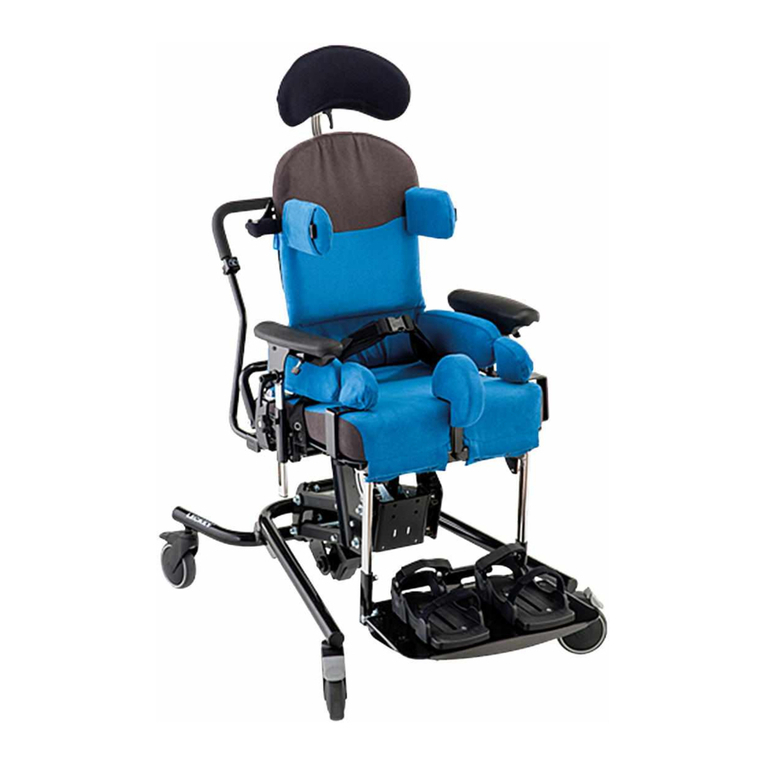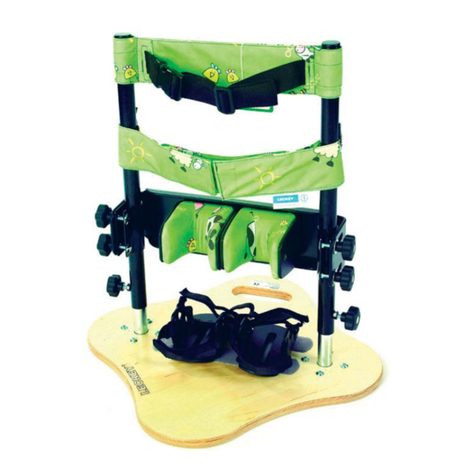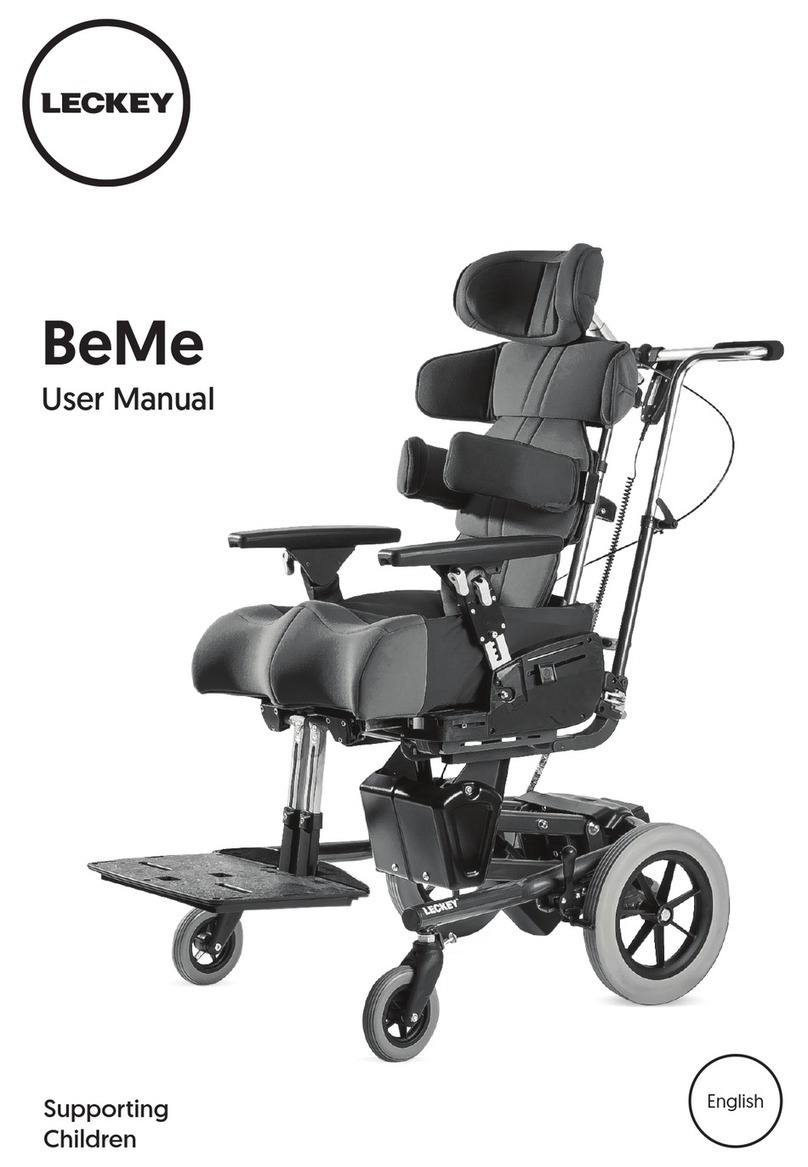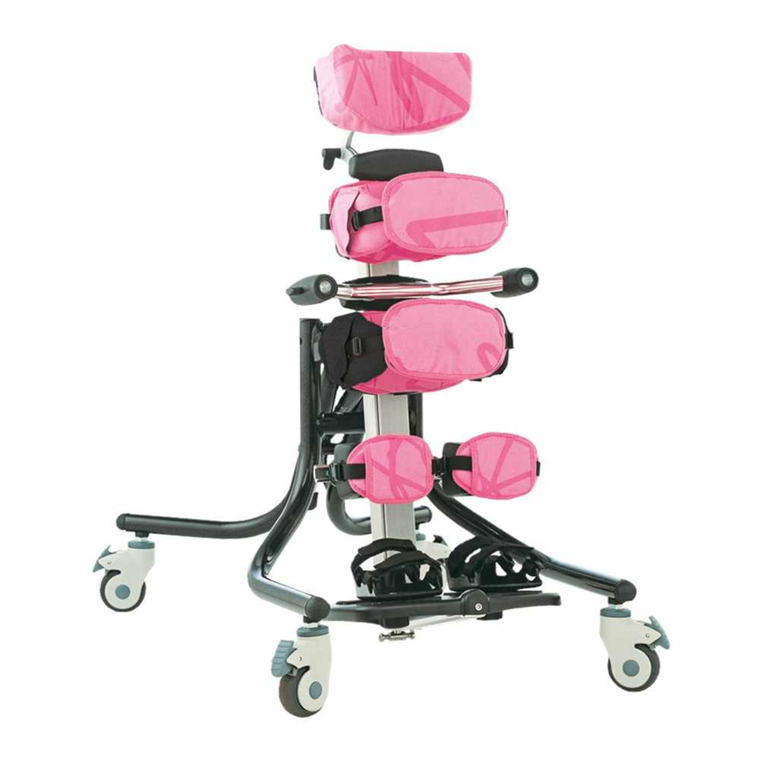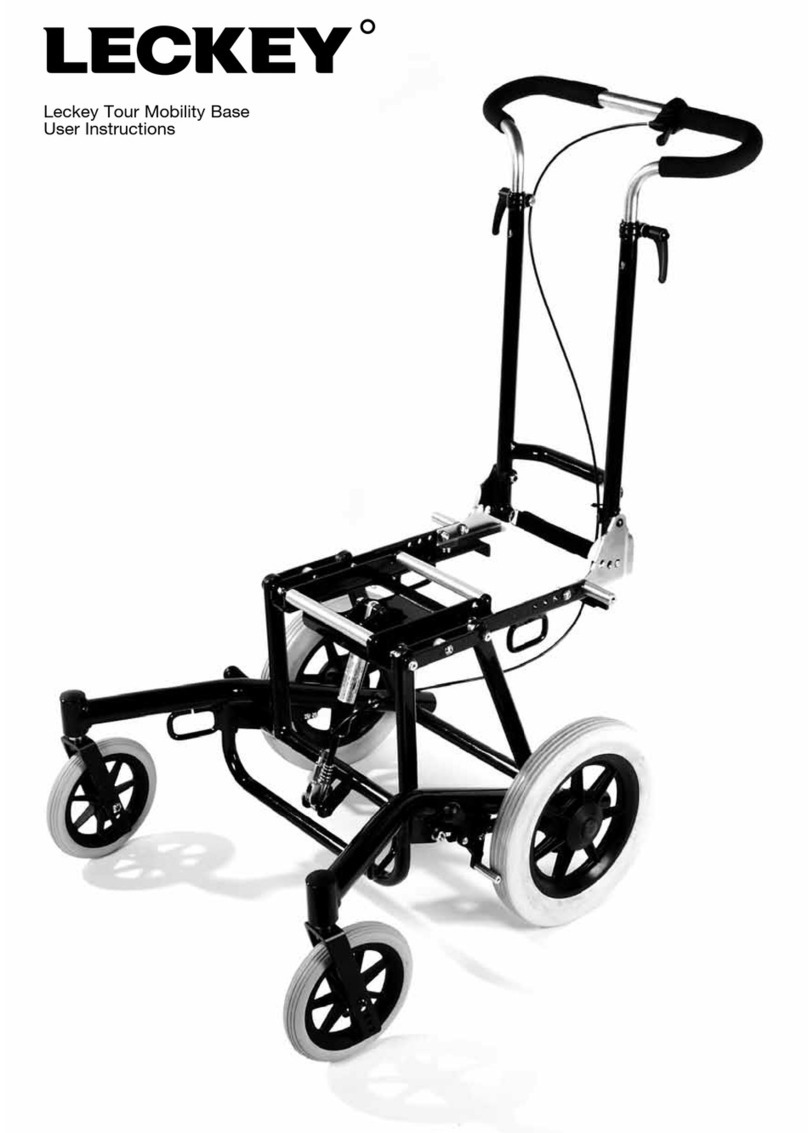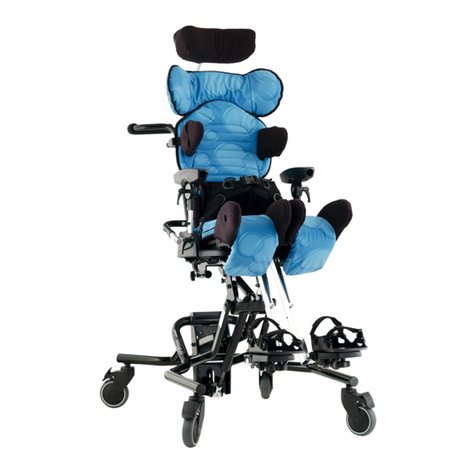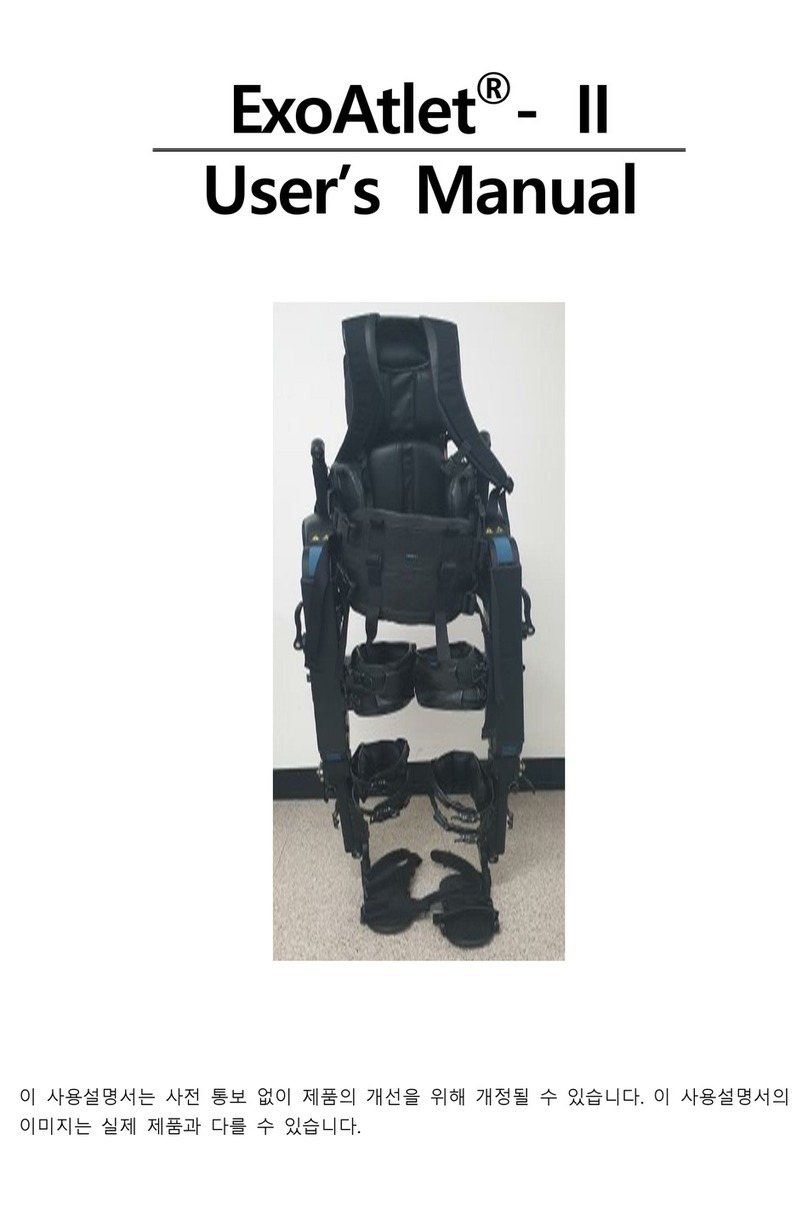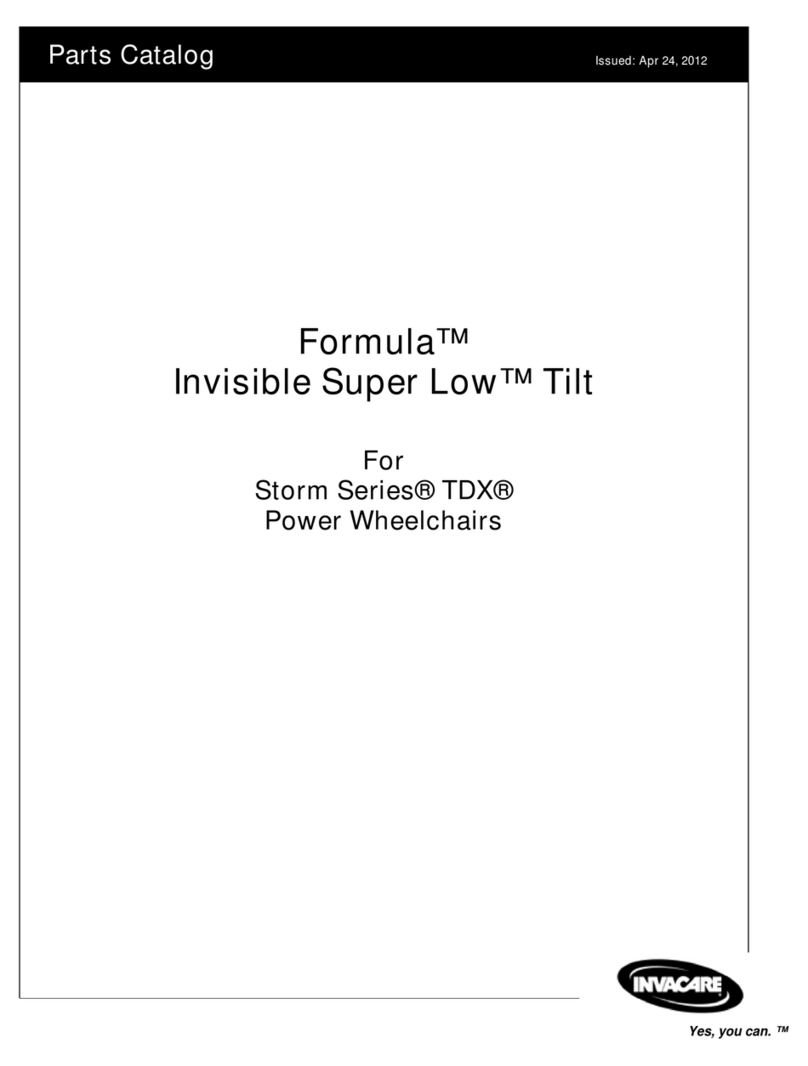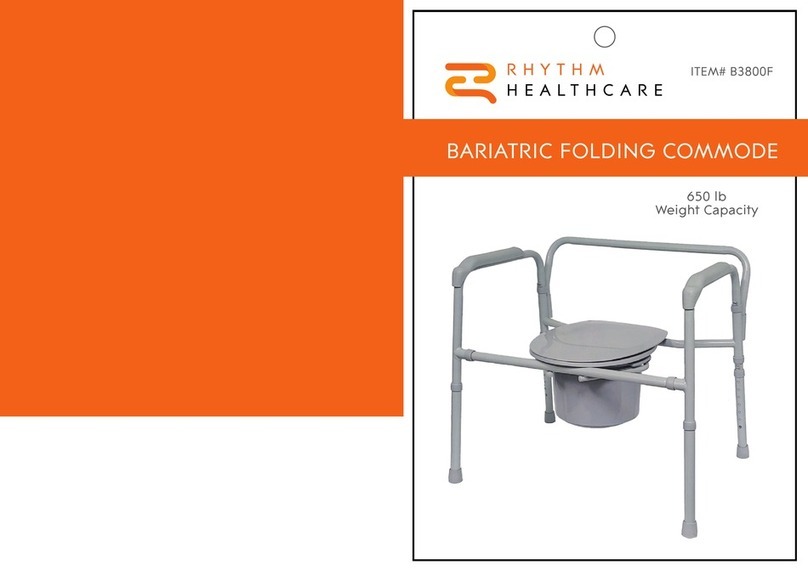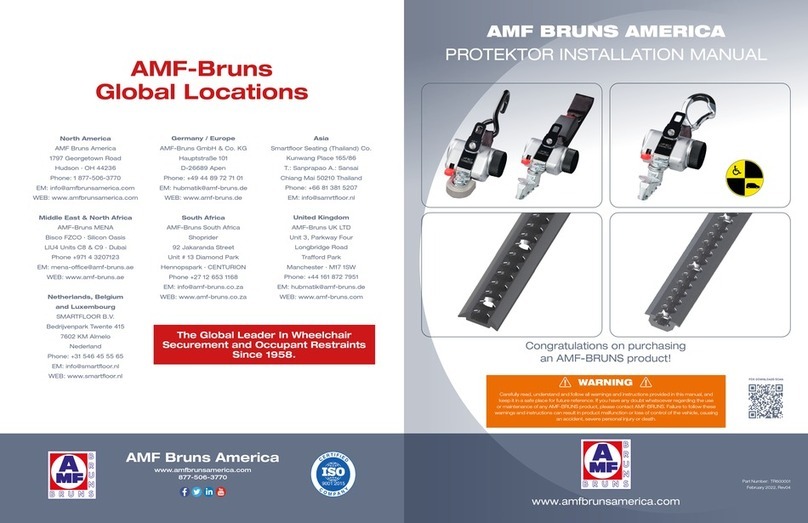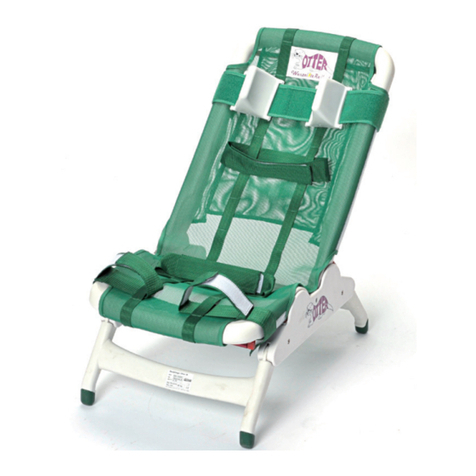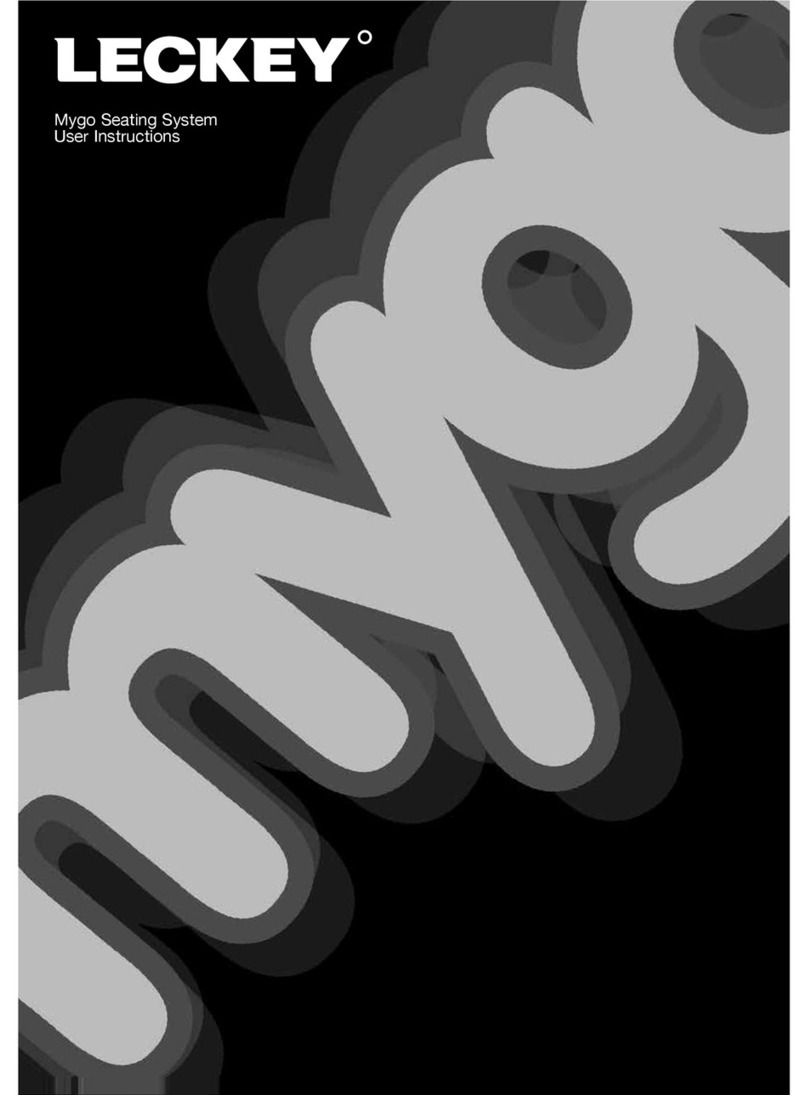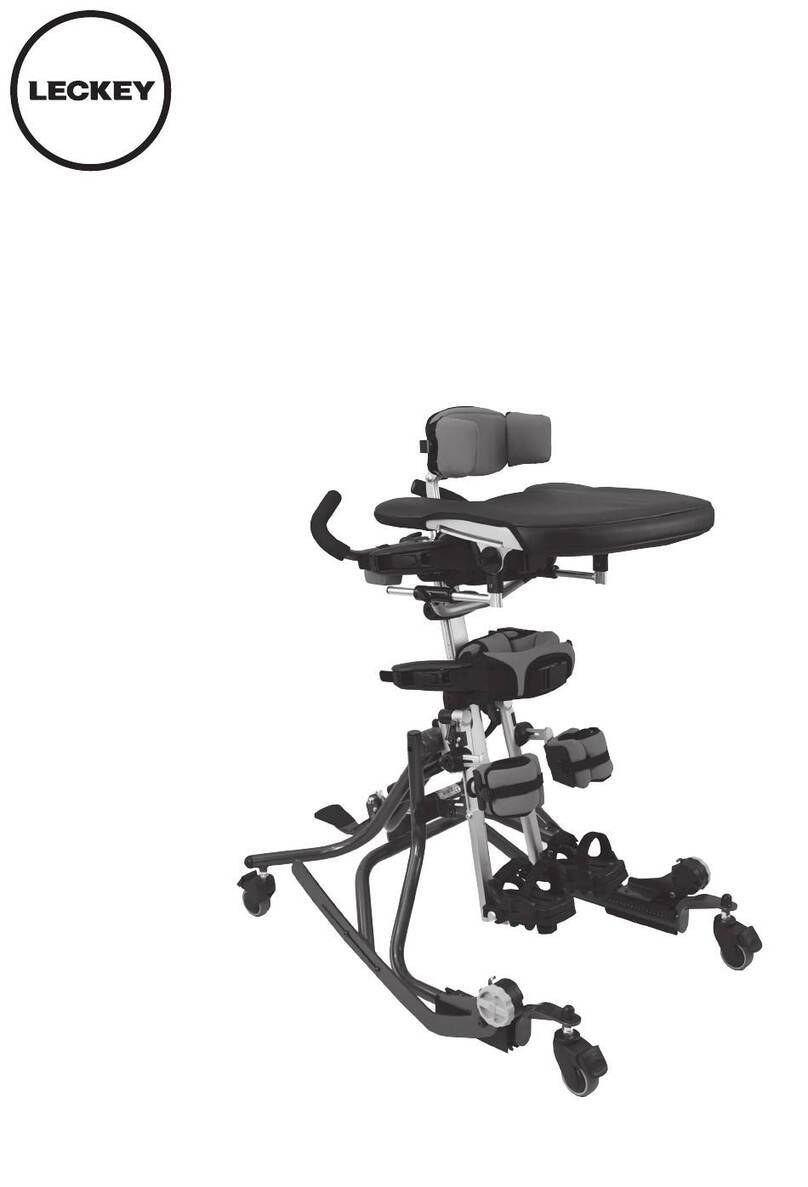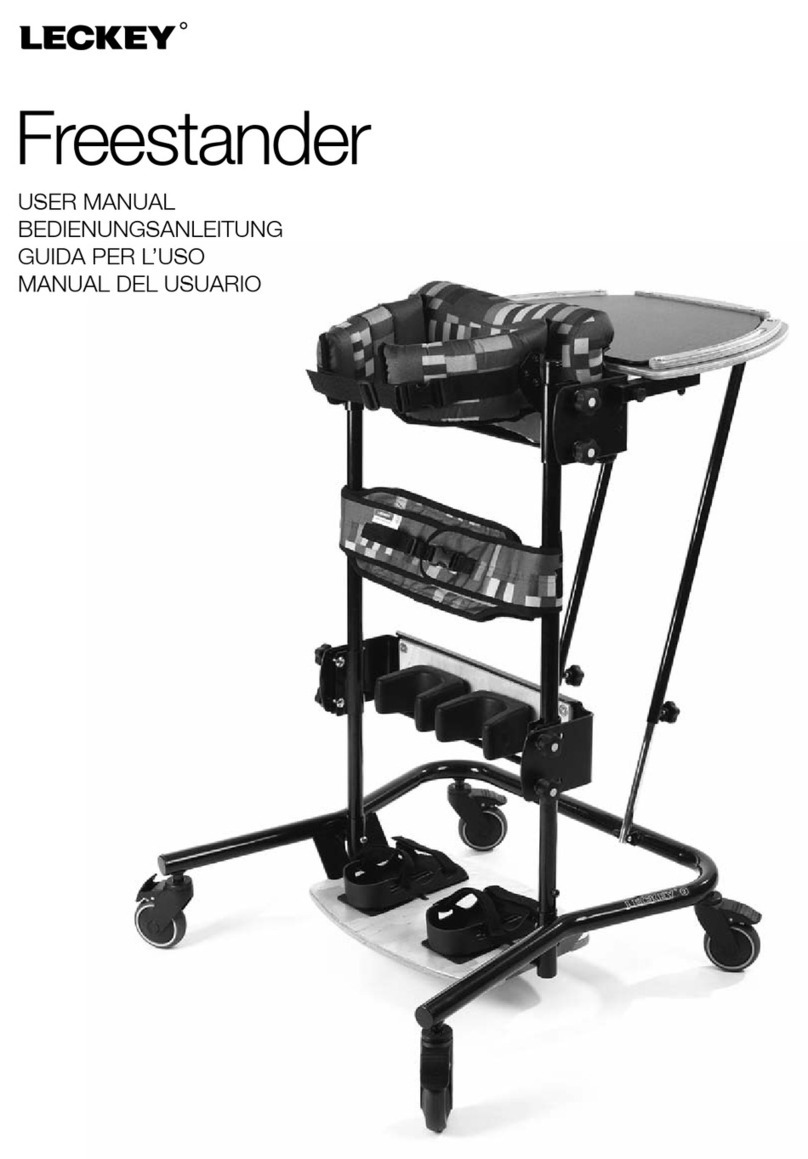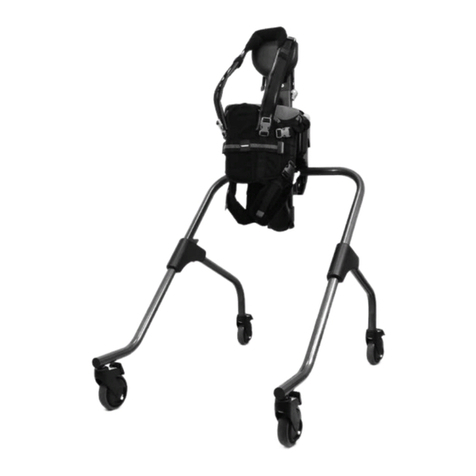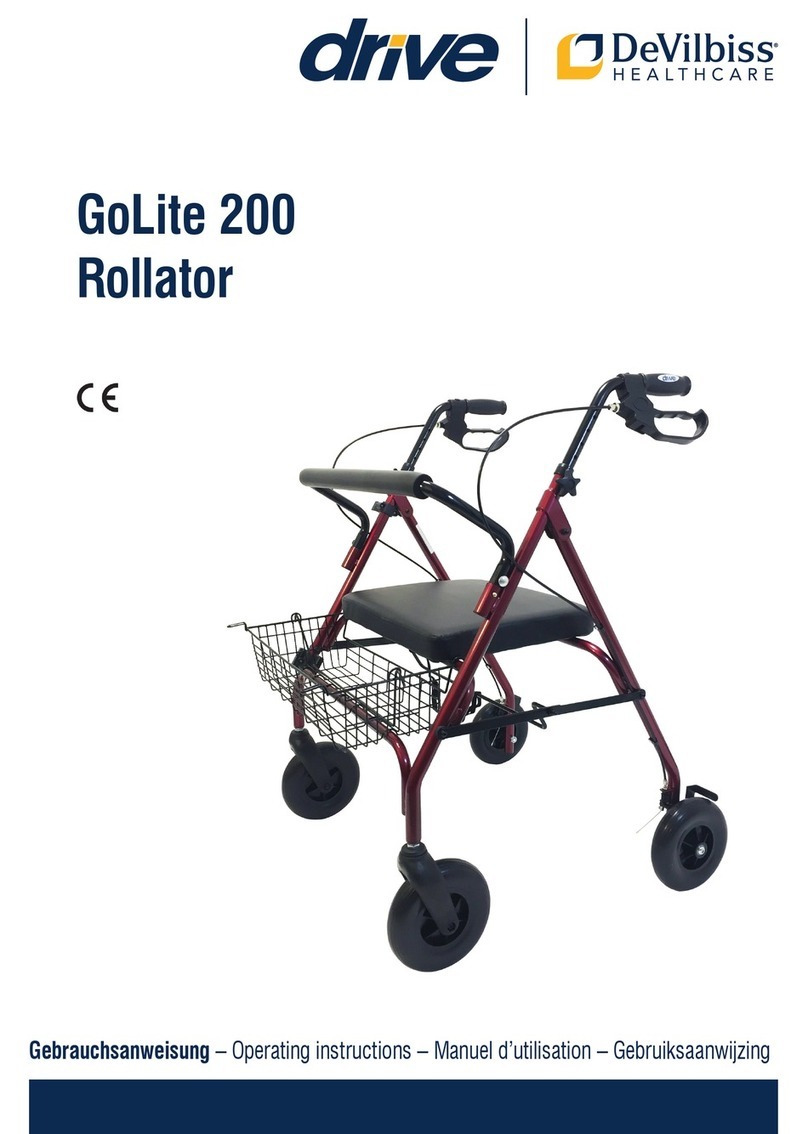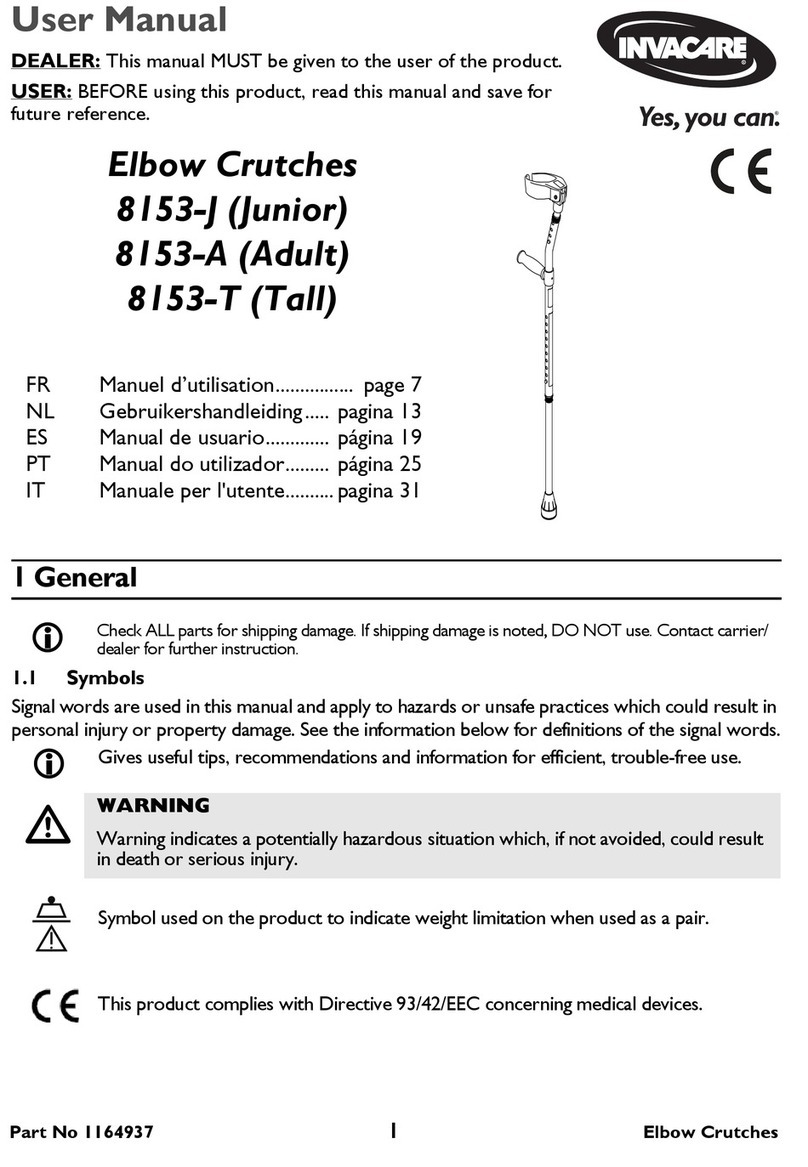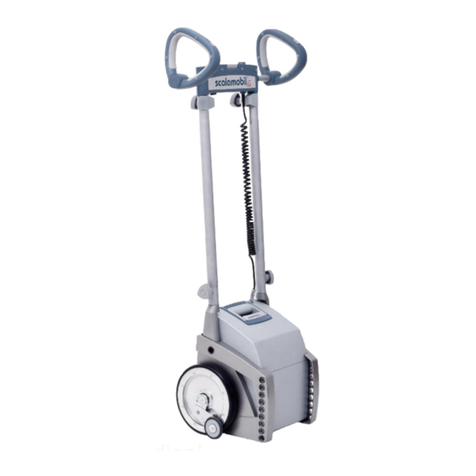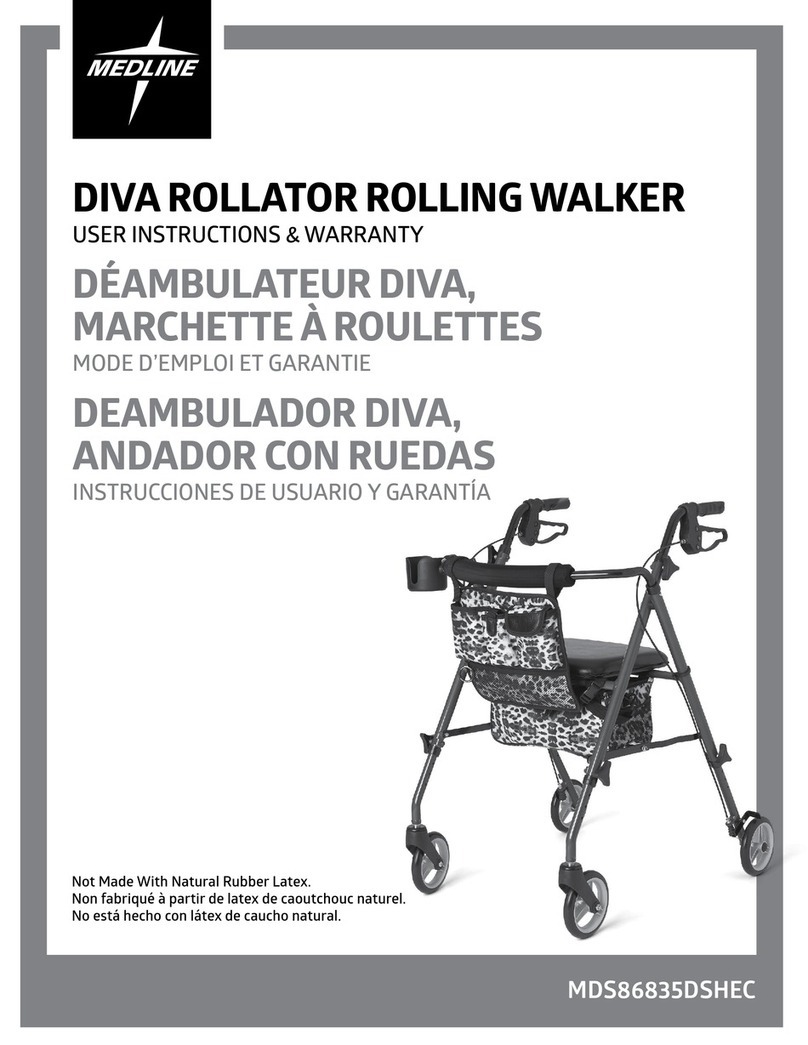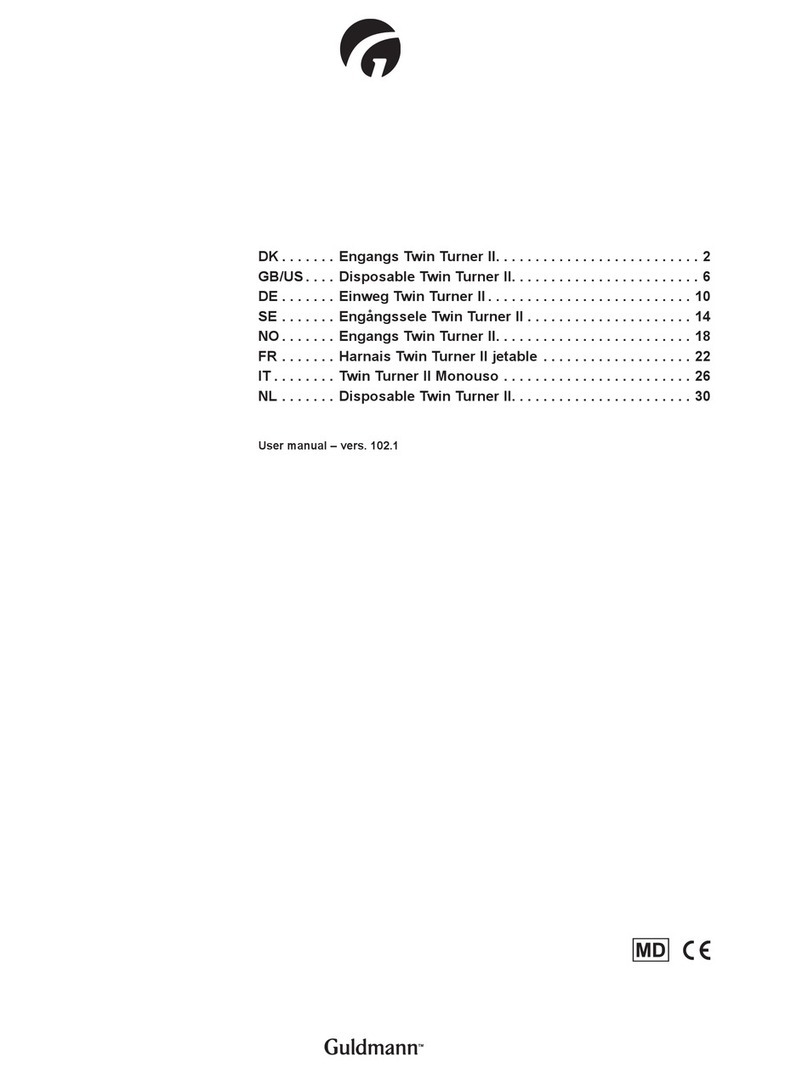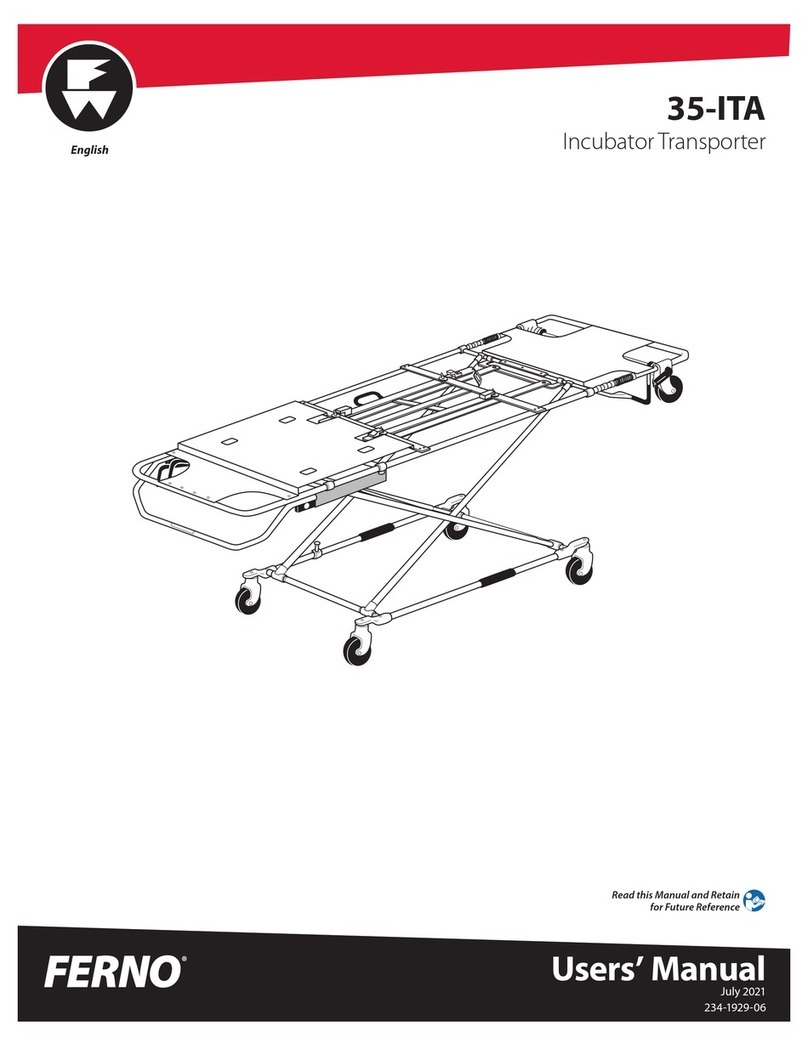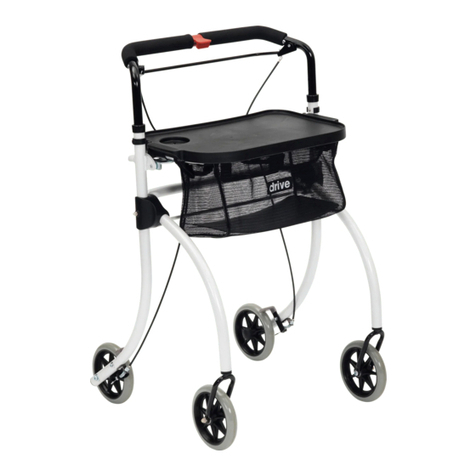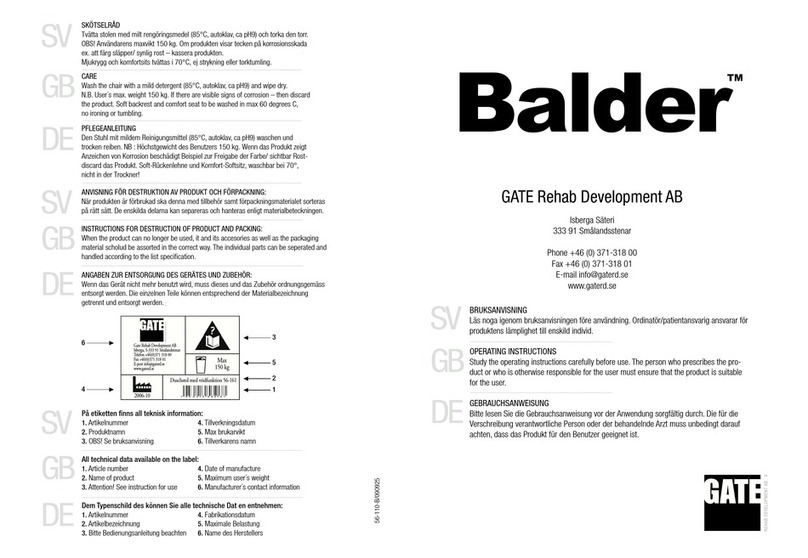1. Intended Use
The Kidwalk is the first partial weight
bearing, posturally supportive mobility
system that is designed to move with the
child, giving them the freedom to move
and walk while keeping their hands free
explore their surroundings. The Kidwalk
is available in two sizes. Size 1 caters for
children aged 1-7 years and Size 2 for
children aged 5-12 years, the size one
having a maximum user weight of 30kgs
(65lbs) and the size two 50kgs (110lbs).
2. Declaration of Conformity
James Leckey Design Ltd. as authorised
representative for Axiom Industries Inc.
(Prime Engineering) declares that the
Kidwalk conforms to the requirements of
the 93/42/ EEC Guidelines and EN12182
Technical aids for disabled persons
general requirements and test methods.
3. Terms of Warranty
The warranty applies only when the
product is used according to the
specified conditions and for the intended
purposes, following all manufacturers’
recommendations (also see general terms
of sales, delivery and payment). A two
year warranty is provided on all Leckey
products and components.
4. Product History Record
Your Leckey product is classified as
a Class 1 Medical device and as such
should only be prescribed, set up
or reissued for use by a technically
competent person who has been trained
in the use of this product. Leckey
recommend that a written record is
maintained to provide details of all set
ups, reissue inspections and annual
inspections of this product.
5. Product Training Record
(Parents, Teachers & Carers)
Your Leckey product is a prescribed Class
1 Medical Device and as such Leckey
recommend that parents, teachers and
carers using the equipment should be
made aware of the following sections
of this user manual by a technically
competent person:
Section 6
Safety Information
Section 9
Frequent Adjustments for Daily use
Section 10
Cleaning and Care
Section 11
Daily Product Inspection
Leckey recommend that a written record
is maintained of all those who have been
trained in the correct use of this product.

